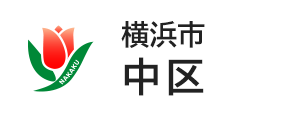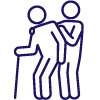- Yokohama-shi Top Page
- Naka Ward Top Page
- Introduction of the ward
- Overview of Naka Ward
- The name of Naka Ward and its Ayumi
- Name of Naka Ward and its History
The text is from here.
Name of Naka Ward and its History
Last updated on July 16, 2024.
The origin of the town name starting with "Nanoneno" and the date of installation are posted.
Source: "Yokohama Town Name" City of Yokohama, Civic Affairs Bureau (issued in December 1996), Hamada City Town Name Historical Magazine (issued in 1939), Yokohama City Bulletin
- Nakaodai
- Nagashima-cho
- Naniwa-cho
- Nigiwaicho
- Nishiki-machi
- Nishitakenomaru
- Nishinoya-cho
- Nihon Odori
- Negishiasahidai
- Negishikazodai
- Negishi Lawndai
- Negishidai
- Negishi-cho
- Nogecho
Nakaodai
Established on April 1, 1933.
The town was newly established from a part of Negishi-cho in 1933. In the old days, it was called Negishi-mura, Kuraki-gun, and became Negishi-cho when transferred to Yokohama City in 1901. The name of the town was named after the name "Nakao" with "dai" because this area is on the plateau. According to the place name study, "Nakao" means "the ridge in the center of Tando".
Nagashima Town (Nagashima)
Established in November 1873.
Abolished in 1928.
Installed at the Yoshidashinden landfill. It was abolished on September 1, 1928 when the name of Machikaimachi was rearranged.
It is a part of the current 5, 6, and 7-chome Isesagicho, Naka-ku.
Some areas of Nagashima-cho 4 and 5 will be Akebonocho.
Part of Nagashima-cho 7-chome will be Sanno-cho, Minami-ku.
Naniwacho (Naniwa)
Details are unknown.
Abolished in 1928.
The "50 Years History of Yokohama Port Opening" (1909) states that it was newly established in Keio 2nd year, but it is not listed on the map of the early Meiji era. After the establishment of Yoshiwara Yukaku (Keio 3rd year), it is possible that the town name was given around 1872. September 1, 1928 Abolished due to the reorganization of the name of Machikaimachi.
Most of the current 3-chome Hagoromocho, Naka-ku.
Lively town (Nigicho)
Established in November 1873.
Abolished in 1928.
Newly constructed in the Yoshidashinden landfill. It was abolished on September 1, 1928 when the name of Machikaimachi was rearranged.
It is included in the current 3-4-chome Isesagicho, Naka-ku.
Part of the bustling town 2-chome will be Akebonocho.
Nishikicho (Nishikicho)
Installed on November 10, 1967.
A newly established town following the reclamation of land such as Honmoku-cho and Honmoku Motomachi in 1967. The name of the town was named to celebrate the auspiciousness.
Nishitakenomaru (Nishitakenomaru)
Established on April 1, 1933.
The town was newly established from a part of Negishi-cho in 1933. In the old days, it was called Negishi-mura, Kuraki-gun, and became Negishi-cho when transferred to Yokohama City in 1901. The name of the street was written.
Nishinoyacho (Nishinoyacho)
Established on April 1, 1933.
A town newly established from each part of Kitakata-cho, Honmoku-cho, and Negishi-cho with the enforcement of the street name lot number arrangement in 1933. In the old days, it was called Kitakata-mura, Kuragi-gun. The name of the street was written. There is a record of "Nishiya To Seinan Nari" in "Kitakata Village" in "New Edition Musashi topographical record". "Tani" is an abbreviation of "Tando".
Nihon Odori (Nihonodori)
Established on September 1, 1928.
A town that abolished Sakaimachi due to the reorganization of Machikaimachi names and lot numbers in 1928, and was newly established from that area and a part of Yamashitacho and Honmachi character 1-chome. In the old days, it was called Yokohama-mura, Kuraki-gun, and was designated as a foreign settlement at the opening of Yokohama in 1859 (1859), but at first it did not set a street name. In January 1879, the name was given to the foreign settlement, and 30 new towns were established, including Kagacho, Satsuma, and Echigocho, and this town was named Nihon Odori. In 1900, Nihon Odori was renamed Yamashitacho and became Nihon Odori. The name of the town was the old character.
Negishi Asahidai (Negishi Asahidai)
Established on April 1, 1940.
A town newly established in 1940 with the name of Negishi Lawndai changed to Negishi Asahidai. In the old days, it was called Negishi-mura, Kuraki-gun, and became Negishi-cho when transferred to Yokohama City in 1901. In 1933, Negishi Lawndai was newly established from a part of Negishi-cho. There is a record of "Negishi Village" in "Shinbu Musashi topographical record" in "New Edition".
Negishikazodai (Negishikazodai)
Established on April 1, 1933.
The town was newly established from a part of Negishi-cho in 1933. In the old days, it was called Negishi-mura, Kuraki-gun, and became Negishi-cho when transferred to Yokohama City in 1901. The name of the town was named after the name "Kaso" with "dai" because this area is on the plateau. In the section of "Negishi Village" in "Shinbu Musashi topographical record", there is a record of "In Kaso East". It is said that "kazo" means "cliff" in the place name study.
Negishi Shibadai (Negishi Shibadai)
Established on April 1, 1933.
Abolished in 1940.
The town was newly established from a part of Negishi-cho in 1933. One of the characters was taken from the lawn stand, Terakubo, Nishinegishimachi character lower, and the west lawn, and the name of this town was assumed to be Negishi's lawn stand.
The name of the town was changed on April 1, 1940. It becomes the current Negishi Asahidai.
Negishidai (Negishidai)
Established on April 1, 1933.
The town was newly established from a part of Negishi-cho in 1933. In the old days, it was called Negishi-mura, Kuraki-gun, and became Negishi-cho when transferred to Yokohama City in 1901. There is "Nakamaru" in the character name, but since Nakamaru, Kanagawa-ku was newly established in 1932, it was named Negishidai because this area is the plateau of Negishi.
Negishicho (Negishicho)
Established on April 1, 1901.
A town newly established from Negishi-mura, Kuragi-gun when transferred to Yokohama City in 1901. In the old days, it was called Negishi-mura, Kuraki-gun. In 1927, some of the character lawns, west lawns, lower, Sakashita, Baba and upper areas of Negishi-cho were renamed Nishinegishi-cho and incorporated into Isogo Ward. Along with the reorganization of the street name and lot number in 1933, a part of Nishinegishi-cho, Isogo-ku was transferred to Shibadai, Negishi-cho, Naka-ku, and the old character name was abolished and 18 towns were newly established. There is a record of "Hirako-go Negishi-mura" in "Yokohama Document" in "Shinshoji Enjin Hoinji Temple Ruins Donation (1463, 1463)". Kunio Yanagida said in "Research on Place Names", "Negishi, one in Tokyo and Yokohama, is also a number of place names from Kanto to Oshu. In the "place name dictionary", it is written as the righteousness of Negishi in the mountain after hearing the theory of the previous geography. There is no other solution than that. Several terrains that I have examined by sightings or maps also match this. However, it is still necessary to think about why this place name has occurred so much. It is a dialect or an accent that applied the shore to the foot of the hill that was originally at the waterfront." There is a record in the section of Negishi Village in "Shinbu Musashi topographical record", "It is said that Nare Negishi will be Norimura's name." According to the place name study, "Negishi" means "land along the foot of mountains and Oka" and "cliffs and slopes". The town has character areas from 1-chome to 3-chome.
Nogecho
Established on April 1, 1889.
A town incorporated into Yokohama City when the municipal system was enforced in 1889. In the old days, it was called Nomoura, Tobe-mura, Kuraki-gun, and with the opening of Yokohama, it became a place for Kanagawa magistrate in 1860 (1860), and a new Nogecho was established and placed from character 1-chome to 4-chome. The arrangement of the chome was changed with the enforcement of the street name and lot number arrangement on September 1, 1928. Riichiro Nakajima said in "Kanagawa Zoki" in "Japanese Geographical Study", "Noge is a tip, and not only here, but also the so-called Nomi-do in Kanazawa Hakkei, Razan Hayashi said in the article of "Hiroaki Diary" in 1645, "Kanazawa's Notsuga-do, Kaneoka said that he would throw away his brush and ask for it. Dr. Yoshida says, "Now Annotsuke is a common word of Noge," and it is clear that this is just righteous, just like Nogeyama in Yokohama. " Also, in place name research, "Noge" often means "cliff". The town has character areas from 1-chome to 4-chome.
Inquiries to this page
Naka Ward General Affairs Department Ward Administration Promotion Division
Phone: 045-224-8123
Phone: 045-224-8123
Fax: 045-224-8214
E-Mail address [email protected]
Page ID: 698-343-795












